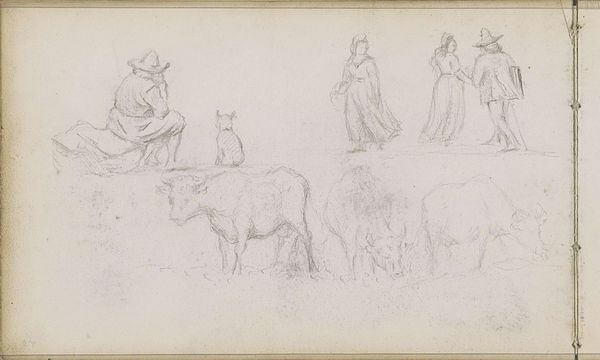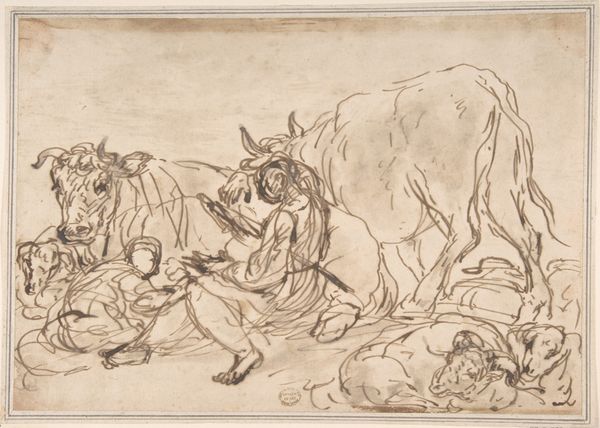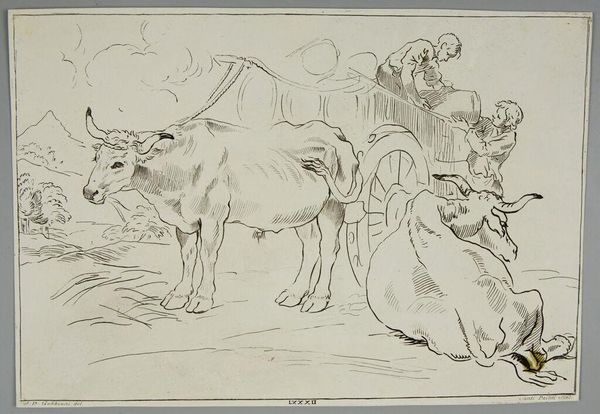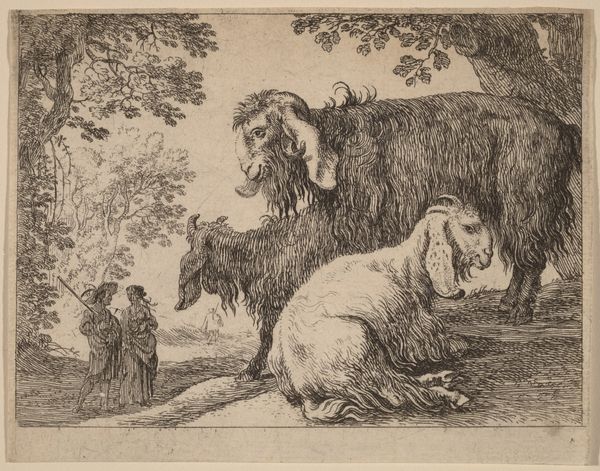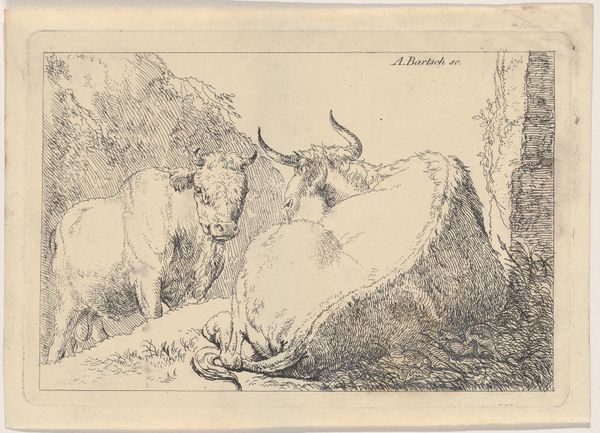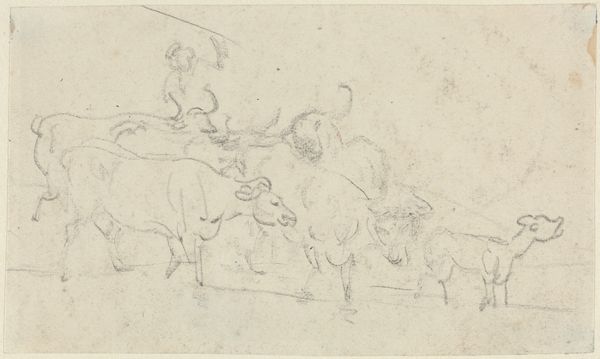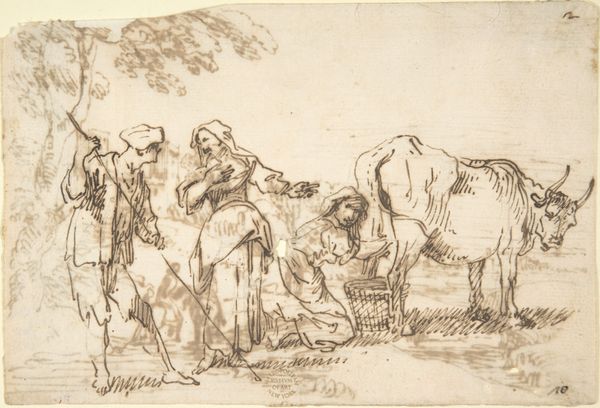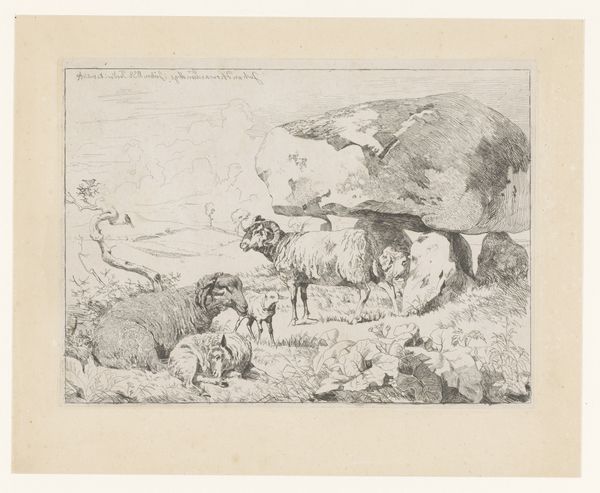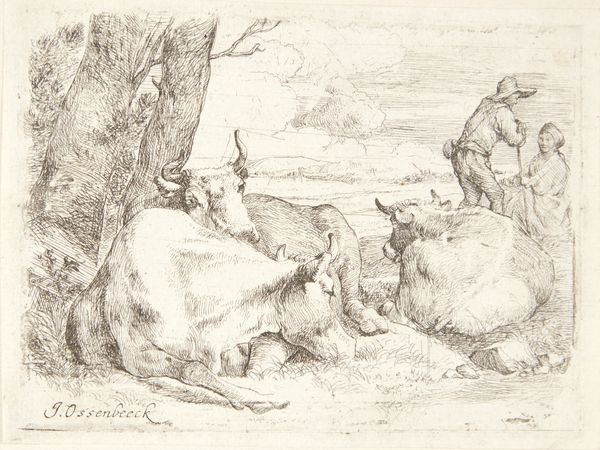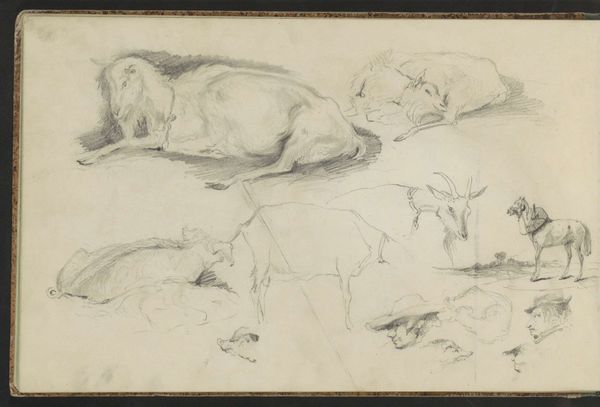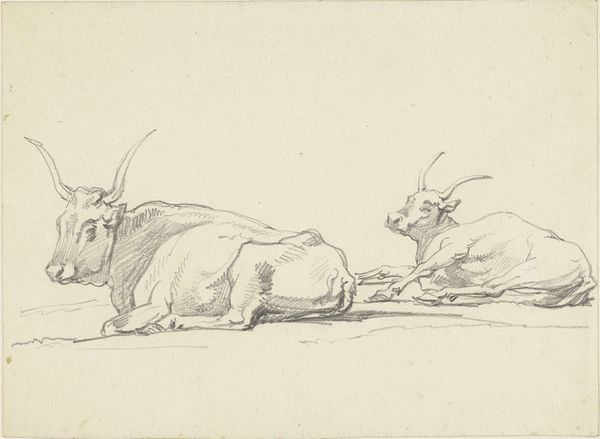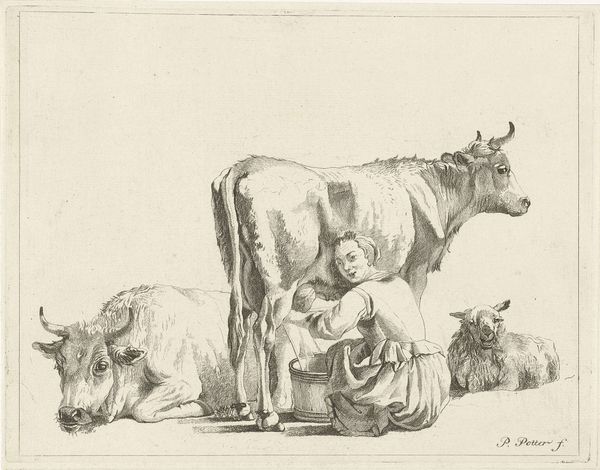
drawing
#
drawing
#
toned paper
#
light pencil work
#
pencil sketch
#
charcoal drawing
#
possibly oil pastel
#
coloured pencil
#
coffee painting
#
underpainting
#
watercolour illustration
#
watercolor
Dimensions: 119 mm (height) x 155 mm (width) (bladmaal)
Editor: Here we have Nicolai Abildgaard's drawing, "Pasiphae med den lille Minotauros," dating between 1743 and 1809. It's rendered in pencil on toned paper. I'm struck by the somewhat unsettling contrast between the tender depiction of Pasiphae and her child, and the presence of the bull, looming in the background. What do you see in this piece, focusing on its formal elements? Curator: Indeed. From a formalist perspective, observe the strategic arrangement of figures, the compositional balance achieved through contrasting light and shadow. Note how Abildgaard uses line weight to differentiate between Pasiphae, delicately rendered, and the more massive, coarsely defined bull. It isn’t merely a representation, but a carefully constructed visual dynamic. How do you interpret this contrast? Editor: I see what you mean, the use of line really separates the subjects and creates the focus on the interaction between mother and child. It is really all about lines and composition here and less about telling the story... But could that be a symbolic representation of the monstrous within the seemingly ordinary, highlighted by the very structure of the drawing? Curator: A perceptive reading. This brings up an interesting point about art historical reception and whether interpretation taints visual appreciation. However, consider what changes we have made to the initial observation if we did bring that in as an option? Does understanding the monstrous reading overshadow the very clear rendering techniques present in this composition? What does the medium tell us in itself? Editor: That’s fascinating. I hadn't considered the medium’s own inherent expressiveness as a dialogue within the piece, too. Looking again with that lens, it's clear Abildgaard used the pencil sketch almost as a tool to enhance the dichotomy within the picture itself. Thanks!
Comments
No comments
Be the first to comment and join the conversation on the ultimate creative platform.
